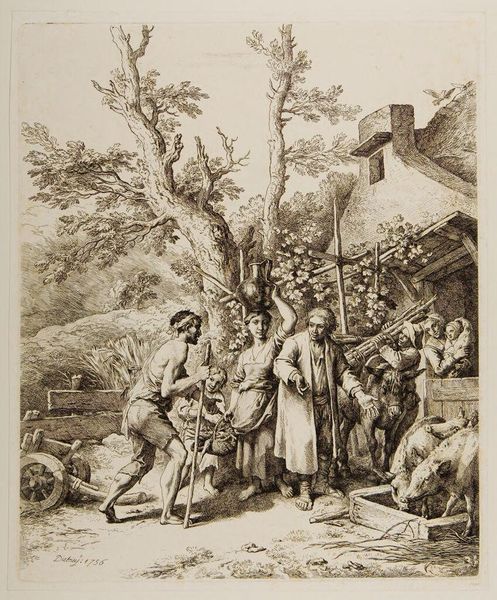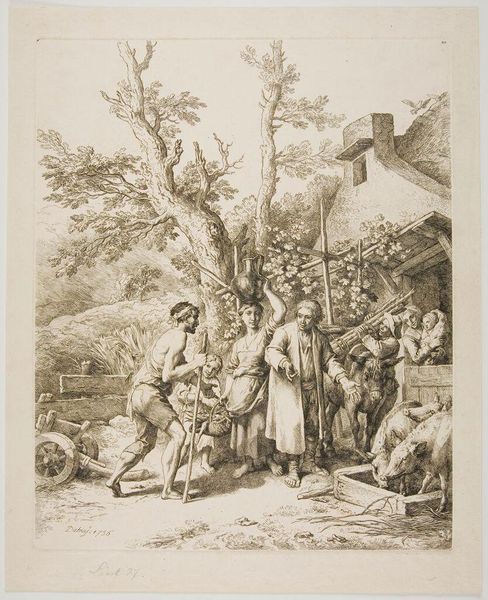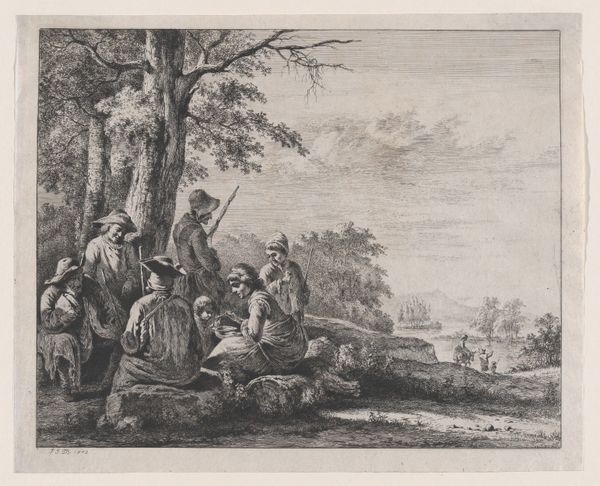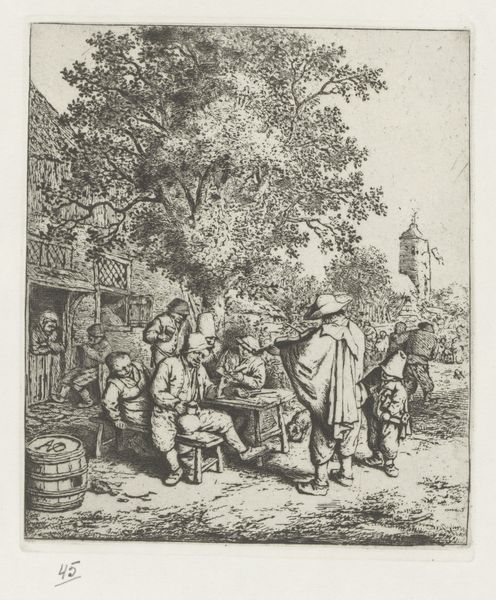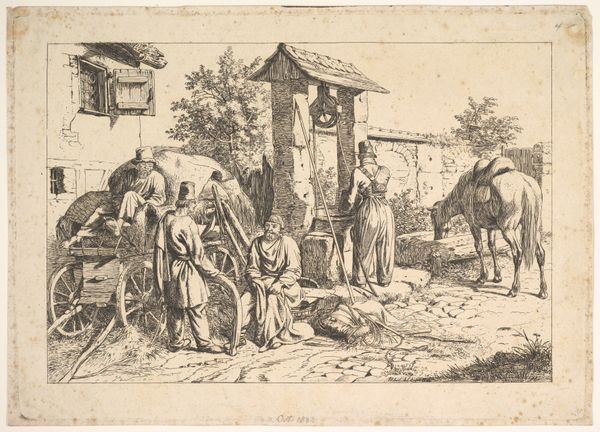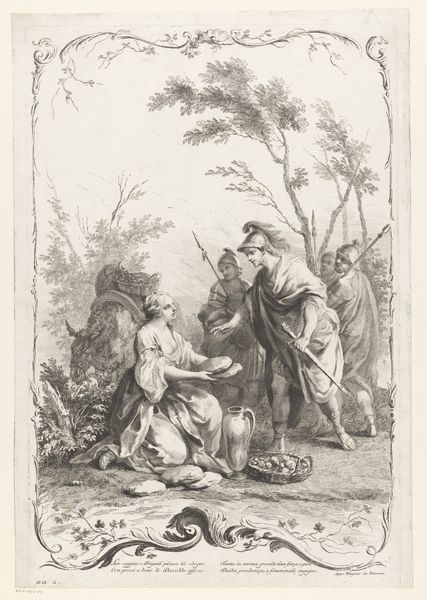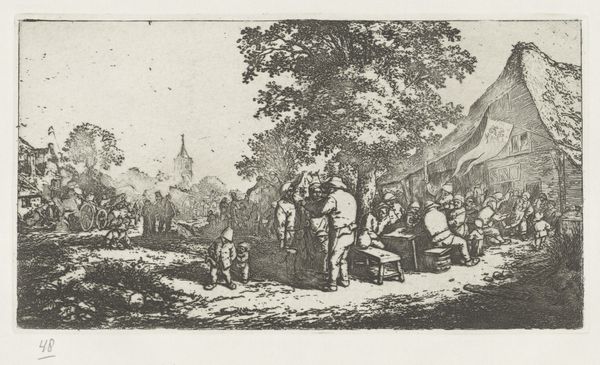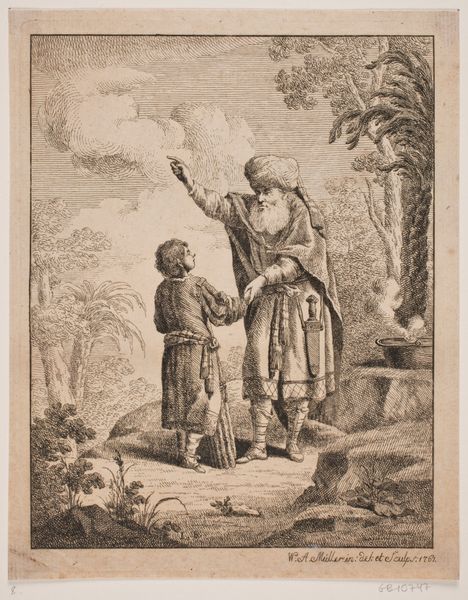
Gelijkenis van de verloren zoon; de verloren zoon vraagt een boer om werk 1756
0:00
0:00
christianwilhelmernstdietrich
Rijksmuseum
print, etching
#
ink drawing
#
narrative-art
#
baroque
# print
#
etching
#
landscape
#
figuration
#
genre-painting
#
realism
Dimensions: height 362 mm, width 296 mm
Copyright: Rijks Museum: Open Domain
Curator: This etching from 1756 by Christian Wilhelm Ernst Dietrich, titled "Gelijkenis van de verloren zoon; de verloren zoon vraagt een boer om werk", depicts a scene from the parable of the prodigal son. The artwork currently resides in the Rijksmuseum. Editor: It feels… dusty. There’s a certain desperation conveyed by the scratchy lines and the stark contrast between the exhausted figure and the relative prosperity surrounding him. Curator: Note the use of line. Dietrich employs hatching and cross-hatching meticulously to sculpt forms and generate areas of shadow and light. Look at how it gives volume to the figures, from the farmer’s face to the swine in the pen. Semiotically, darkness often symbolizes hardship and repentance in art. Editor: The placement of the swine in such proximity to the interaction drives that point home, doesn’t it? It throws into stark relief just how far this figure has fallen, not just economically, but socially and spiritually as well. Also note the visual hierarchy with the farmer's gaze downcast in what may be indifference. Curator: The figures are arranged with careful balance. On the left, we see the bowed, laboring figure and wheelbarrow; on the right, a cluster of standing people and animals, creating a visual weighting that reinforces the composition. Structurally, we see a dichotomy, the wandering son and the wealth of the farmlands. Editor: It makes one think about the economics of religious parables, or their appeal. Are they actually about redemption or maintaining class structures? Do these visual cues, such as this contrast in wealth, guide the audience's perception, nudging them toward a predetermined moral lesson? Curator: Intriguing points. Considering that the Baroque style blends realism with allegorical intent, Dietrich possibly uses compositional arrangement to elicit empathy from the viewer. Editor: Or perhaps reinforce a pre-existing power dynamic. Either way, there’s a somber story embedded within the textures and stark tonal gradations. Curator: Yes, considering all the elements, the artist clearly achieved a powerful depiction of hardship and perhaps also the hope of reintegration, formal features reflecting the narrative. Editor: It’s interesting to ponder the societal context framing the prodigal son's story and its continual resonance, or its enduring use in social control over centuries.
Comments
No comments
Be the first to comment and join the conversation on the ultimate creative platform.
